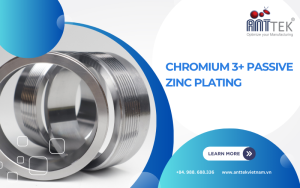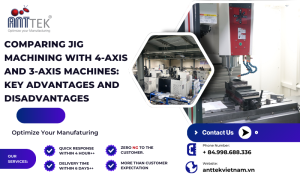Ngày đăng: 2024/11/11 11:01:44 AM |
21 Lượt Xem
I. Overview of PU plastic and the common applications of bonding PU plastic to metal
1.1 What is PU Plastics?
Polyurethane (PU) plastic is a type of polymer known for creating durable and robust coatings. Widely used in various industries, PU plastic offers outstanding features such as wear resistance, chemical resistance, and excellent elasticity. Bonding PU plastic to metal not only enhances protection but also improves the aesthetics and functionality of metal products, especially in fields like semiconductor components and precision machinery.
1.2 Common Applications
Bonding PU plastic to metal is widely applied in industries like automotive, aerospace, and machinery manufacturing, including semiconductor components and precision mechanics. Products such as machine casings, automotive parts, industrial equipment, and semiconductor components are often coated with PU plastic to increase durability, resist corrosion, and reduce noise.

II. Techniques for applying PU adhesive to metal
2.1 Selecting the Appropriate Type of PU Adhesive
There are various types of PU (polyurethane) adhesives on the market, each with specific properties and applications. For optimal performance, it is essential to choose a PU adhesive that meets the specific requirements of the application, such as hardness, chemical resistance, and curing time. In applications involving semiconductor components and precision mechanics, selecting the right type of PU adhesive is crucial to ensure the product’s performance and reliability.
2.2 Preparing the Metal Surface
The metal surface must be thoroughly cleaned to remove dirt, grease, and other impurities. Cleaning methods may include mechanical scrubbing, chemical cleaning solutions, or a combination of both. Ensuring the metal surface is completely clean helps to enhance the adhesion of the PU adhesive, especially in precision mechanical applications.
2.3 Inspecting the Metal Surface
The roughness and adhesive quality of the metal surface need to be checked. If the surface is too smooth, it may be necessary to roughen it to improve the bonding of the PU adhesive. Techniques for roughening can include using sandpaper or mechanical cutting tools, ensuring compliance with quality standards for semiconductor components and precision mechanics
III. Process of Applying PU Adhesive to Metal
3.1 Preparing the PU Adhesive
Before application, the PU adhesive must be properly prepared. If using a type of PU that requires mixing, follow the manufacturer’s instructions to achieve the correct mixing ratio. Ensure thorough stirring to achieve a uniform quality, especially when applying in fields like precision mechanics and semiconductor components.
3.2 Applying PU Adhesive to the Metal Surface
PU adhesive can be applied using various methods, including spraying, brushing, or pressing. Spraying is often used for an even coating over large areas, while brushing may be more suitable for smaller areas or details. Make sure to distribute the PU adhesive evenly and in the correct amount for optimal results, particularly in semiconductor and precision mechanical applications.
3.3 Bonding and Curing Techniques
The drying and curing time of PU adhesive depends on the type of adhesive and environmental conditions. To achieve a strong bond, adhere to the necessary drying time and maintain suitable temperature and humidity conditions during curing. This is especially important in applications requiring high precision, such as semiconductor components and precision mechanics.
IV. Quality Inspection and Assessment of the PU Adhesive Bonding Process
4.1 Inspecting Bond Quality
After the PU adhesive has completely dried, inspect the bond quality between the PU adhesive and the metal. Testing methods may include adhesion tests using specialized tape or performing mechanical tests. For semiconductor components and precision mechanical products, testing must ensure the highest quality standards are met.
4.2 Troubleshooting and Adjustments
If issues such as peeling or uneven adhesion arise, identify the cause and adjust the process to correct it. Common issues may include an unclean metal surface or improperly prepared PU adhesive. For applications requiring high precision, timely troubleshooting is crucial.

Anttek Vietnam is a leading CNC machining company with years of experience. We offer a wide range of machining services, catering to diverse customer needs across various industries. With modern equipment and a team of professional technicians, Anttek Vietnam is committed to delivering high-quality products on time and at competitive prices. We are always ready to support and accompany our customers on the path to sustainable development.
For more details, please contact:
Factory: Lot 6, Lai Xa Industrial Zone, Kim Chung Commune, Hoai Duc District, Hanoi, Vietnam
Hotline: +84 968.116.229
Email: khoi.pd@anttekvietnam.com
Website: https://anttekvietnam.vn
Bonding PU plastic to metal offers numerous benefits, including enhanced durability, corrosion resistance, and improved aesthetics. Particularly in semiconductor and precision mechanical applications, PU plastic helps protect and improve product performance, meeting high-quality standards.



















